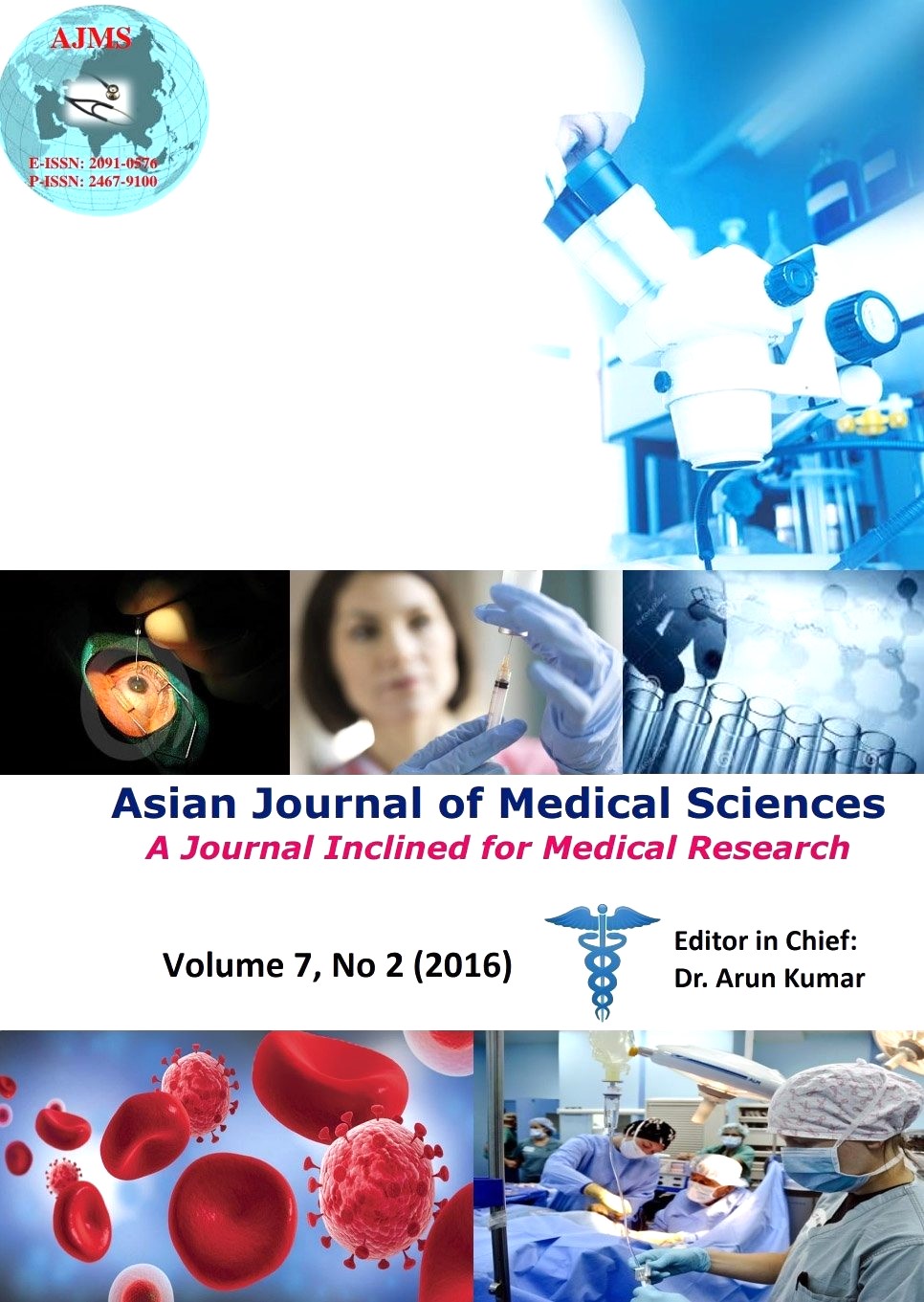Determinants of hypoxemia in children associated with pneumonia
Keywords:
Hypoxemia, Pneumonia, Pulse-oximeter, Sensitivity, SpecificityAbstract
Background and Objectives: The most severe manifestation of pneumonia is hypoxemia has been shown to be a risk factor for morbidity and mortality. Authors investigated associating factors and determinants of hypoxemia in children with pneumonia.
Materials and Methods: A cross-sectional study is designed among children of pediatric outpatient and emergency department that enrolled at Government Multi-Speciality Hospital, Chandigarh. One hundred fifty children recruited for study. The demographic and clinical parameters were recorded. Oxygen saturation measured by pulse oximeter.
Results: The prevalence of hypoxemia was 48% and 61 (84.7%) infants aged 1 year found with hypoxemia. Age (p=0.006), respiratory rate (p=0.001) and severity of pneumonia (p=0.001) were strongly associated with hypoxemia. The prevalence of severe and very severe pneumonia among hypoxemic were 56.1% and 73.7% respectively. Central cyanosis (98.7%), peripheral (98.7%) cyanosis, head nodding (97.4%) grunting (96.15%) were highly specific but suprasternal (62.82%), subcostal (43.58%) and intercostal retractions (44.87%) were fairly specific sign. Sensitivity for subcostal (81.94%) and intercostal retractions (83.33%) was very high but was fair for intercostal (83.33%) retraction. Grunting (p=0.009), nasal flaring (p=0.008), subcostal (p=0.001) and intercostal (p=0.000) retractions were strongly but suprasternal retraction was significantly (p=0.024) associated with hypoxemia. Dyspnea (97.22%) was very sensitive while decrease feeding (84.61%) and irritability (83.33%) was highly but lethargy (58.97%) was fairly specific symptom.
Conclusions: Study suggested that clinical signs and symptoms such as chest wall retraction, decrease feeding, dyspnea, grunting and nasal flaring in children with pneumonia may be utilized as markers for hypoxemia in conditions where pulse-oximeter isn’t available. This study supports the view of hypoxemia was disabling factor in better functional recovery in severity of pneumonia.
Asian Journal of Medical Sciences Vol.7(2) 2015 64-70
Downloads
Downloads
Additional Files
Published
How to Cite
Issue
Section
License
Authors who publish with this journal agree to the following terms:
- The journal holds copyright and publishes the work under a Creative Commons CC-BY-NC license that permits use, distribution and reprduction in any medium, provided the original work is properly cited and is not used for commercial purposes. The journal should be recognised as the original publisher of this work.
- Authors are able to enter into separate, additional contractual arrangements for the non-exclusive distribution of the journal's published version of the work (e.g., post it to an institutional repository or publish it in a book), with an acknowledgement of its initial publication in this journal.
- Authors are permitted and encouraged to post their work online (e.g., in institutional repositories or on their website) prior to and during the submission process, as it can lead to productive exchanges, as well as earlier and greater citation of published work (See The Effect of Open Access).




